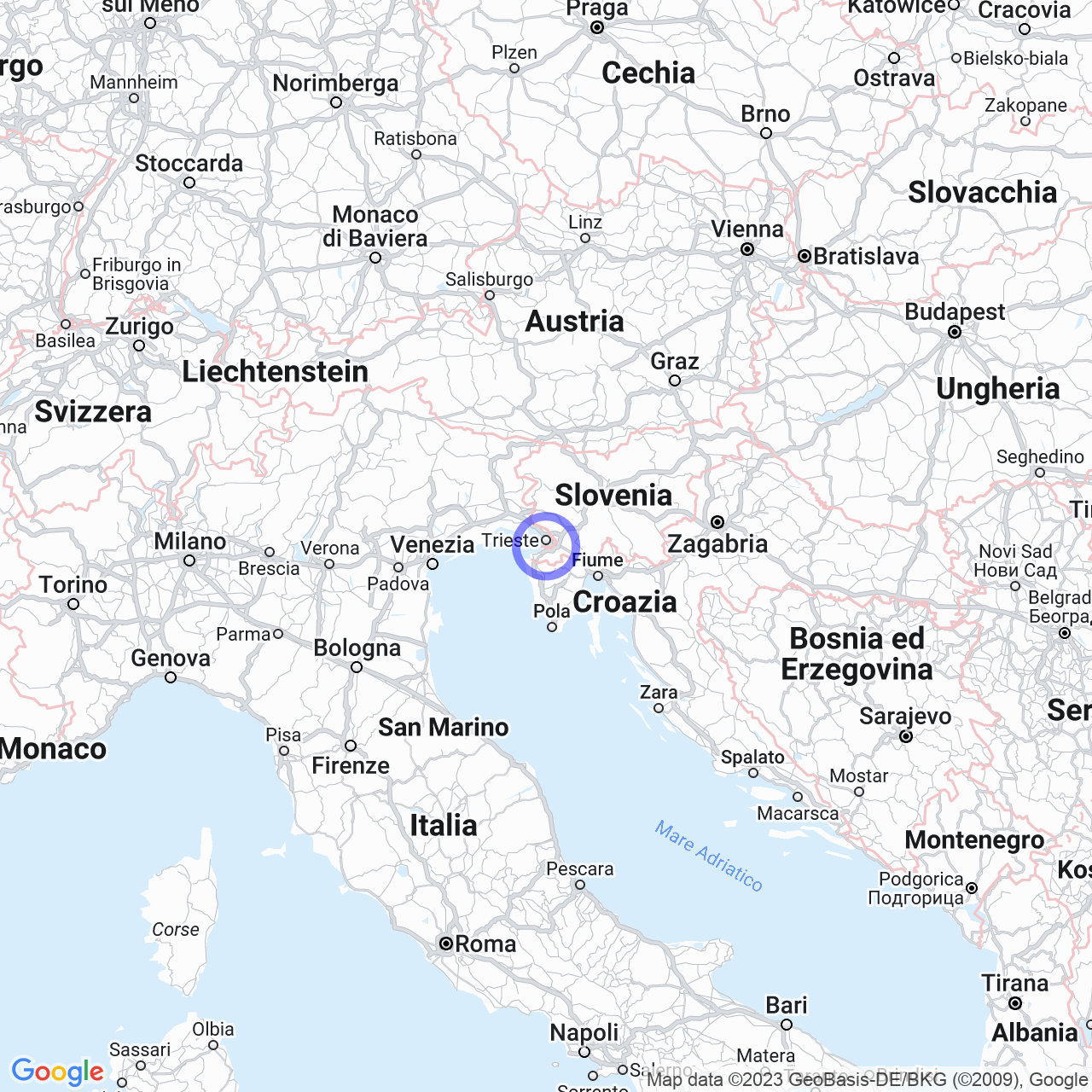Muggia
The Province of Trieste: A General Overview
The province of Trieste, called ''Tržaška pokrajina'' in Slovenian and ''provincia de Trieste'' in the Triestine dialect, no longer exists as an administrative entity since it was replaced in 2017 by the Inter-municipal Territorial Union of Giuliana and then in 2020 by the Trieste Regional Decentralization.
However, despite no longer being a province, it remains as a subdivision of state administration on the territory and is classified by the National Institute of Statistics as a "non-administrative supra-municipal territorial unit".
Located in the Friuli-Venezia Giulia region, the province of Trieste is the smallest of the Italian provinces with an area of just 212 km², due to the loss of the Carso territories, ceded to the Federal Republic of Yugoslavia after World War II. The province of Trieste is also the Italian province with the fewest municipalities, counting only six, and the fourth for population density.
Physical Geography
The provincial territory is almost entirely included in the Karst district and is part of a narrow strip of land about 30 km long that extends between the sea and the Carso plateau (at about 400 meters above sea level) from northwest (province of Gorizia, Monfalcone, Panzano Gulf) to southeast (Trieste), bordering Slovenia (Slovenian Littoral) to the east and the Gulf of Trieste (in the Adriatic Sea) to the west.
The province of Trieste boasts various examples of karst phenomena, such as dolines, caves (the most famous being the Giant Cave) and furrowed fields. The territory presents an absolute logistic centrality of the city compared to the other municipalities, which are like partially conglomerated neighborhoods within the urban fabric. Between Trieste and Muggia lies the Bay of Muggia. However, what characterizes the provincial territory most is the almost complete absence of surface water, excluding the Timavo River, some other minor watercourses in the southern part of the province, and some modest ponds.

Municipalities
The province of Trieste includes only six municipalities, each with its own peculiarities and unique characteristics. These municipalities are Aurisina/Nabrežina (municipal seat), Duino-Aurisina/Devin-Nabrežina, Fernetti/Fernetiči, Medeazza/Medjevas, Monrupino/Repentabor, Muggia/Milje, and San Dorligo della Valle-Dolina/Dolina.
Of these six municipalities, only Trieste and Muggia have a population of over 10,000. Tourist attractions are varied, including the Miramare Marine Nature Reserve and the Duino Cliffs Nature Reserve on the coast, while inland are the Monte Lanaro Nature Reserve, the Monte Orsario Nature Reserve, and the Val Rosandra Nature Reserve.
The Legacy of the Province of Trieste
Although the Province of Trieste no longer exists since 2017, it has left behind a series of cultural treasures that continue to attract tourists and visitors from all over the world. Art and culture have had an important influence in the area, through history and linguistic ties that link the region to Slovenian culture.
The territory of Trieste is also famous for its varied cuisine, characterized by the presence of influences from various culinary origins. Specialties include brodetto (fish soup), Jota (a dish made of beans and meat), San Daniele ham, and the local wines of the Eastern Hills of Friuli, including the famous Schioppettino.
In conclusion, the Province of Trieste is a unique place, where nature, culture, art, and cuisine merge to create a unique and special experience. Despite the province no longer existing as an administrative entity, its legacy continues to influence and shape the territory and life of its inhabitants.
